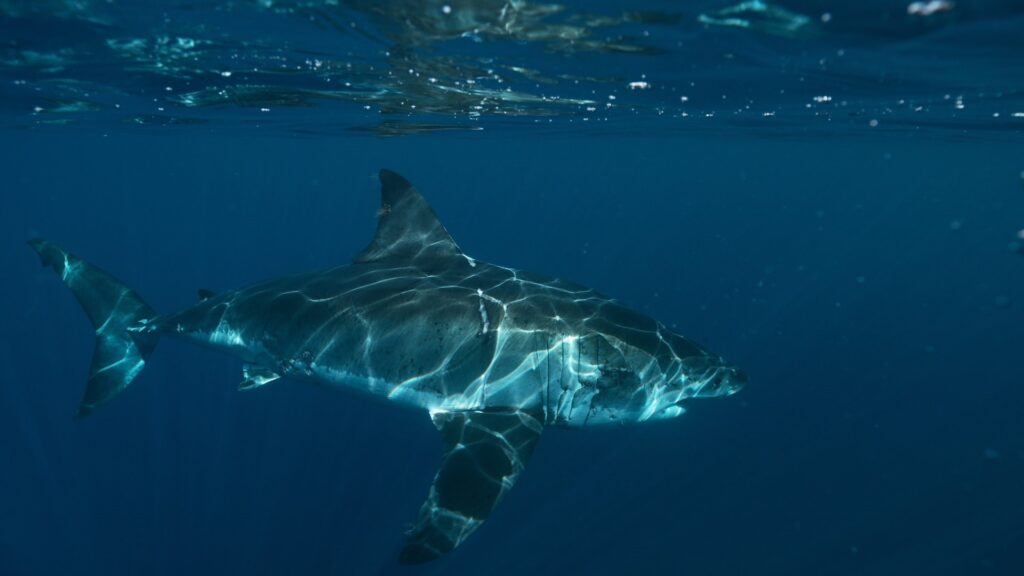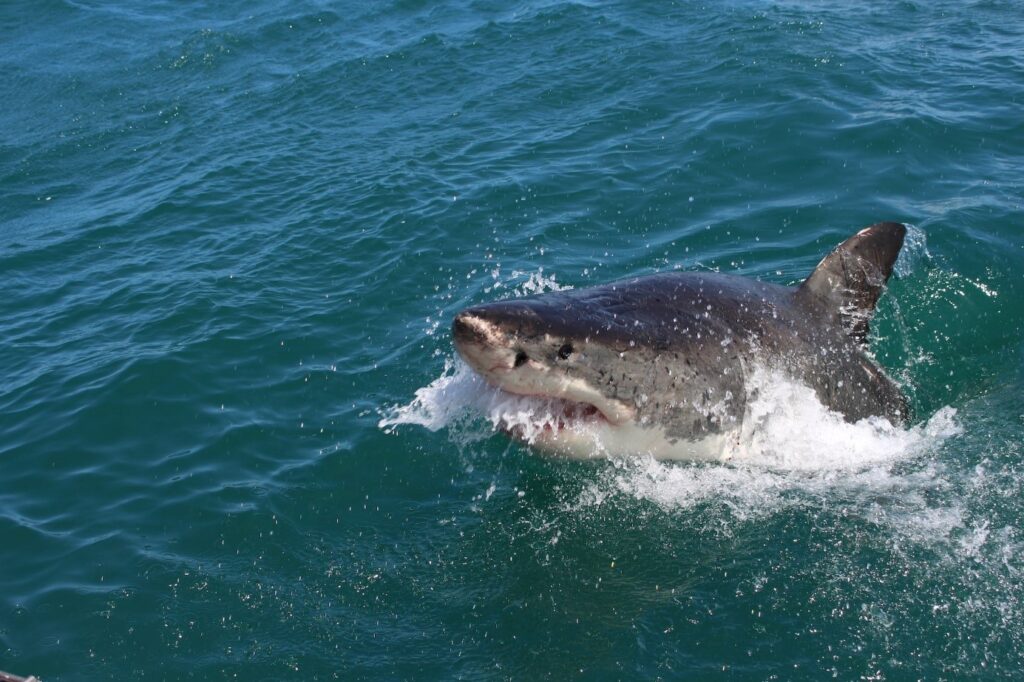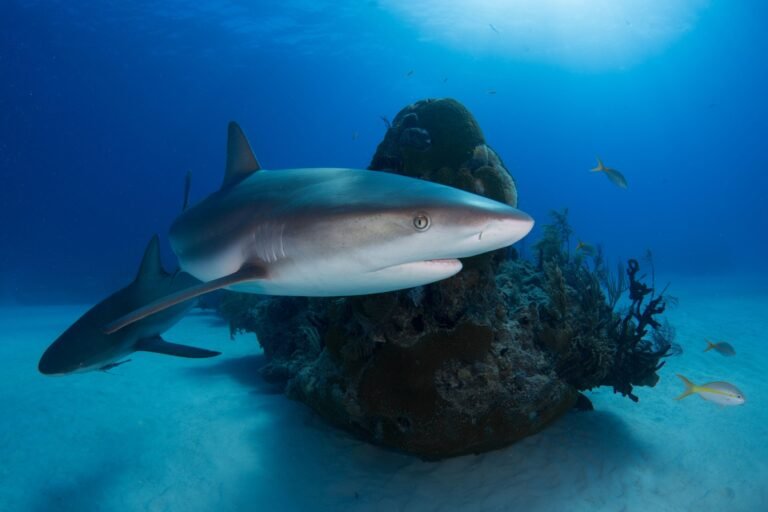The great white shark, shark in real danger

The great white shark impresses with its size and the power of its jaws. Placed at the top of the marine food chain, this super predator is more vulnerable than it seems. Meeting with a colossus threatened with extinction by human activities.
Introducing the Great White Shark
The great white shark belongs to the Lamnidae family, all species of which have the ability to thermoregulate in common. Higher than that of water, their internal temperature allows them to warm up their muscles quickly and to evolve without difficulty in cold waters. The animal moves its massive body with ease thanks to strongly developed falciform (scythe-shaped) pectoral fins and a short, almost symmetrical, crescent-shaped caudal fin. The dorsal part has a sometimes dark gray coloration while its belly is white. The shark measures between 4 and 5 meters and weighs up to 2 tons.

The great white shark, a voracious
In the juvenile stage, the great white shark feeds on fish (swordfish, tarpon) then attacks larger prey when it reaches its adult size: tunas, other species of sharks, turtles, dolphins, porpoises, elephant seals, birds sailors, seals, sea lions. The animal treats itself to a hearty meal approximately every three days. Its hunting technique consists of hiding in the bottom of the water and, after having located a target, propelling itself like a rocket to hit it. Stunned by the collision, the prey lets itself be devoured by the powerful jaws. Contrary to popular belief, the white shark does not consider humans as an enemy. The attacks are exceptional and very often due to confusion with another prey.

Predator from birth
Males reach sexual maturity around 10 years of age. Before the breeding season – which takes place in the spring – females feed on large prey to accumulate fat in anticipation of gestation, which lasts 12 to 18 months. The animal is ovoviviparous, that is, the development of the embryo occurs inside the female’s uterus. At birth, the young already measure between 1 m and 1.60 m and immediately have the instinct of predation.
The endangered great white shark
The only known predators of great white sharks are killer whales and humans. The shark is hunted for its flesh and its fins, but also for its teeth which are sold as souvenirs to tourists. Its cartilages are also used in the manufacture of medicines. Note that, as with many animals, pollution disrupts their reproductive cycles. The population of the great white shark has declined by 75% and its species is threatened with extinction. Classified as vulnerable by the International Union for Conservation of Nature (IUCN), the species has been added to Appendix II of CITES prohibiting its fishing in many countries. A ban not always respected because of the bad reputation from which the animal suffers.






